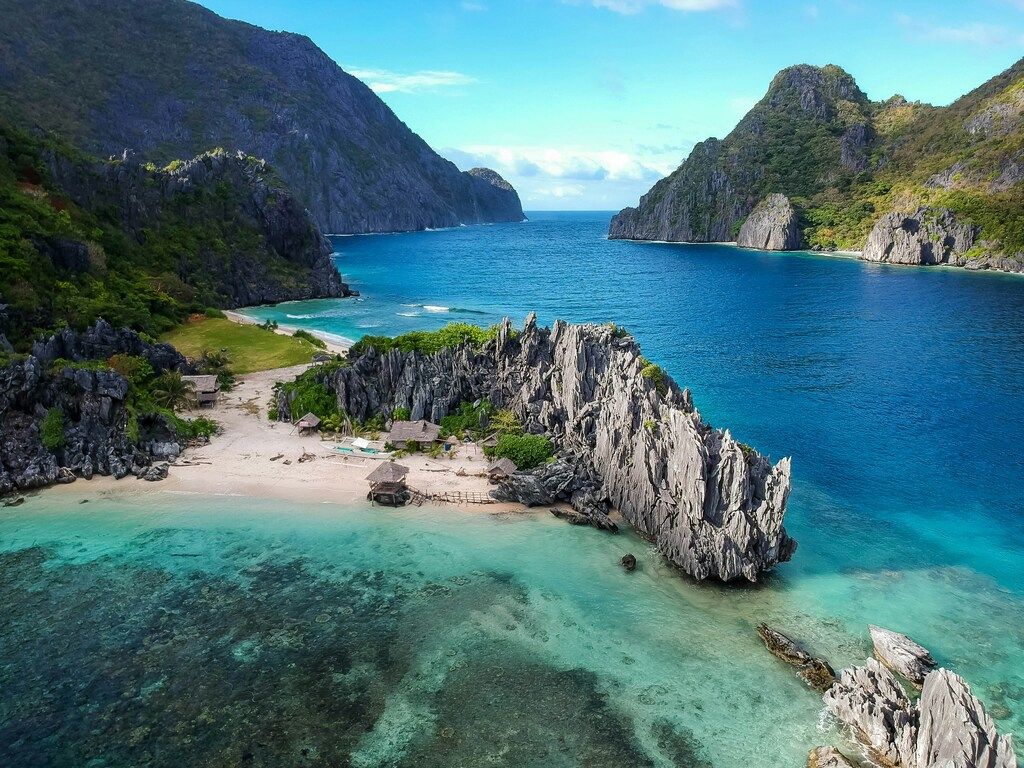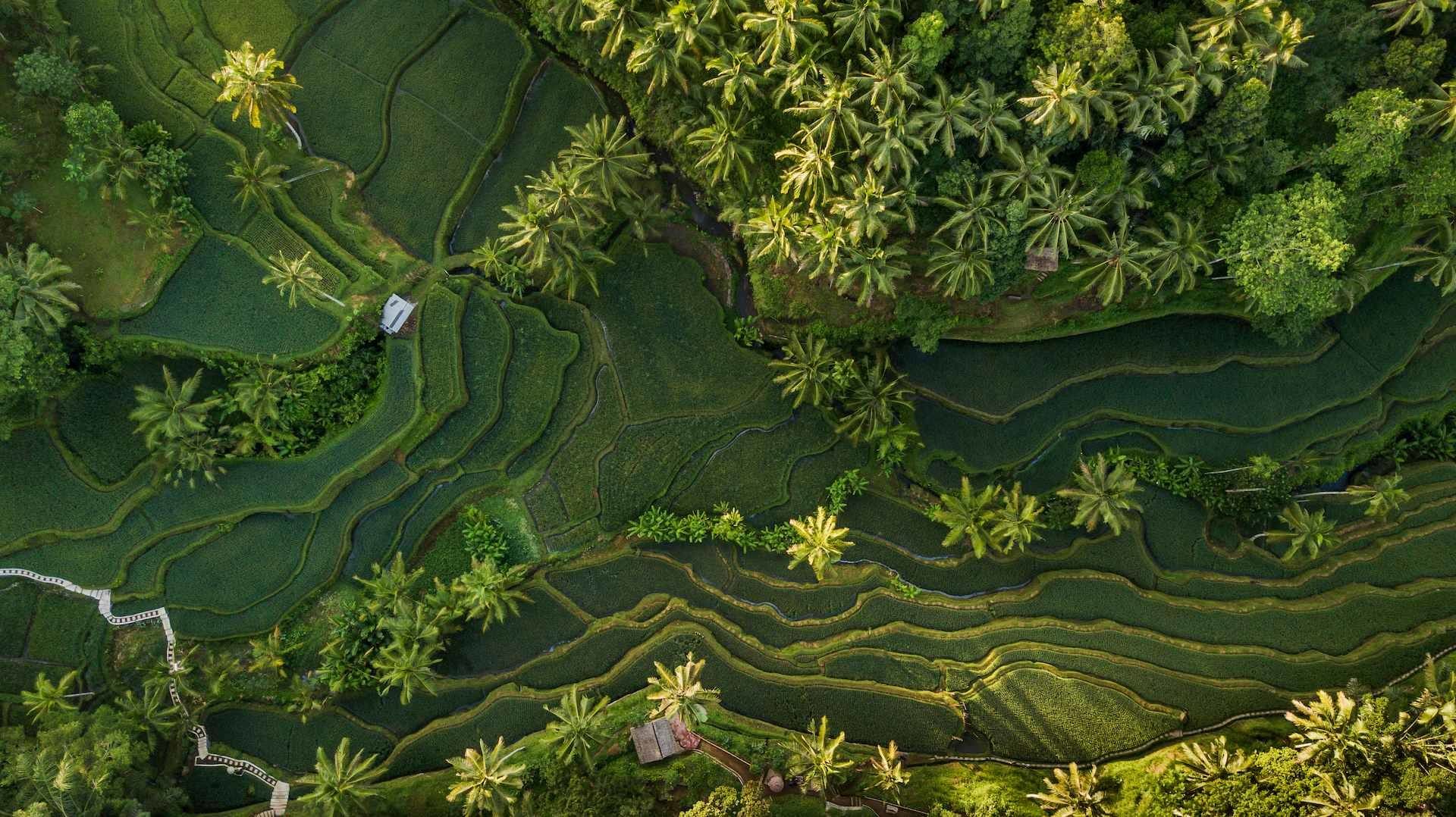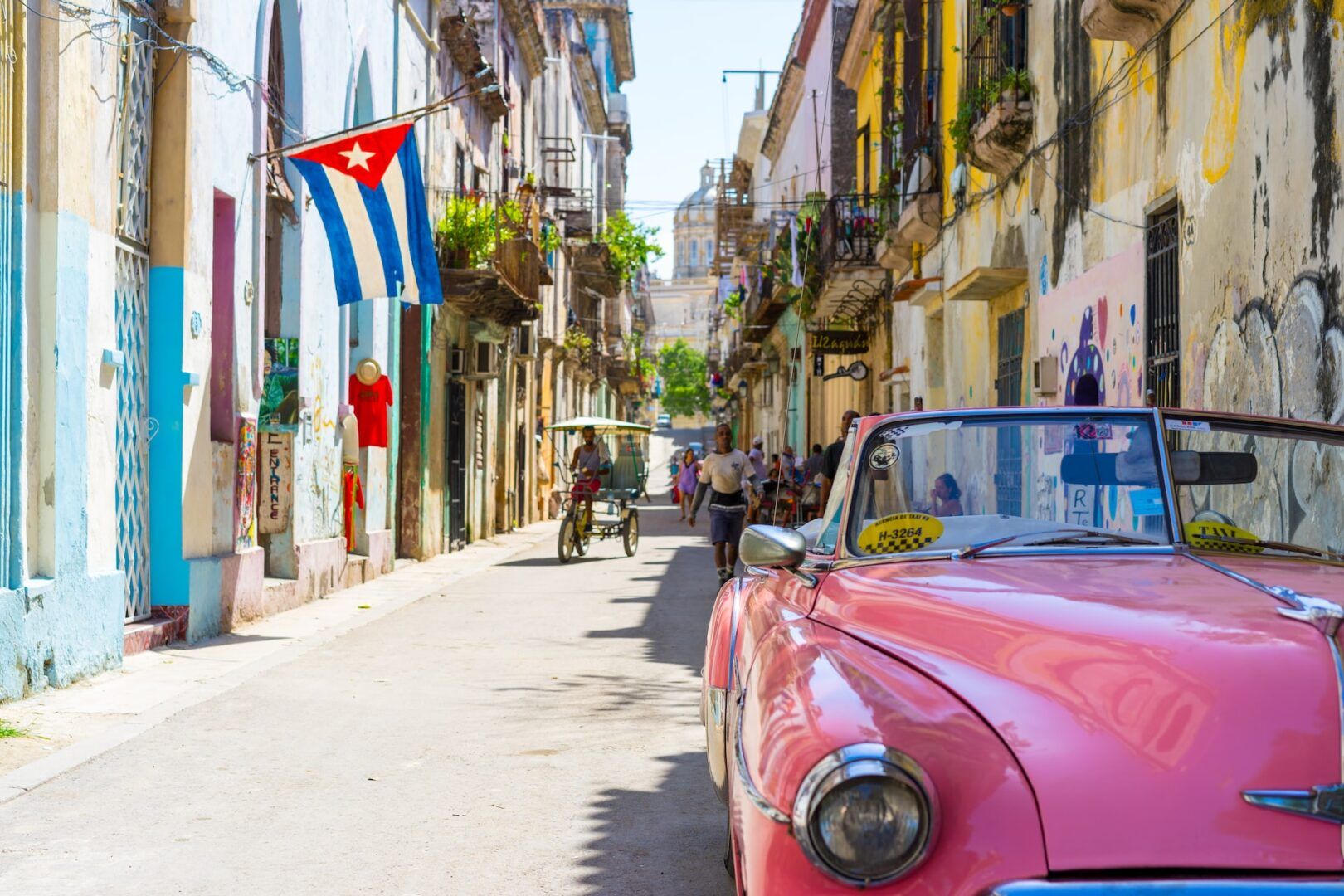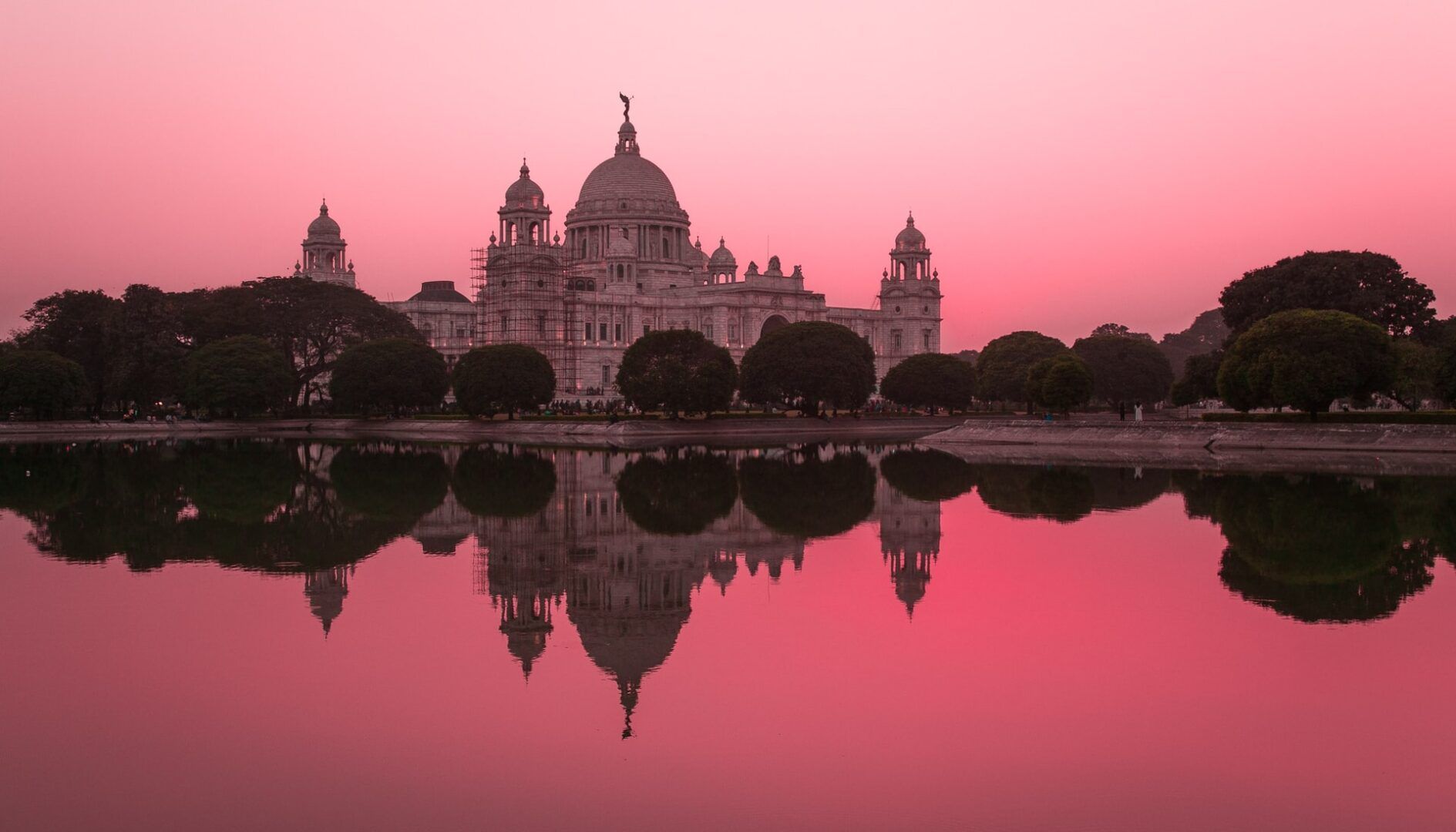

The enchantment of the Taj Mahal, the sacred rites at the Ganges River and the mysterious Thar Desert. Visiting India is somewhat like travelling through time, in a land suspended between a mystical past and a promising future. When we ask ourselves what are the best places to visit in India, we should bear in mind that it is an immense nation, with more than one billion inhabitants. It has tens of thousands of traditions, stories and legends, each of which deserves recognition.
The innumerable dominations of the past have given India a multi-ethnic and fluid character, yet it remains true to itself. The various cities have characteristics that recall the passages of Muslims, English and Portuguese. It has become a sort of open-air museum of architectural styles and art, as well as religions.
The charm of India will carry you away, and you should prepare for a journey that will test your spirit of adaptation. Luxury hotels, sea, mountains, slums, deserts and tea gardens: discover with us the 11 top places to visit in India!
The Taj Mahal
What’s the first thing that comes to mind when you think of India? Well, it would have to be the Taj Mahal, right? You cannot say that you have visited India properly, without first seeing this glorious building.
Completed in 1654 at the behest of Emperor Shah Jahan as a sign of eternal love to his wife’s memory, the architectural complex consists of five main elements: the gate, the garden, the mosque, the “guest house” and the mausoleum or the tomb of the emperor. The height of the Taj Mahal is one of its most surprising features.
The central dome of the mausoleum reaches a staggering 73 metres in height! Red sandstone covers the whole complex. The heart of the Taj Mahal, the mausoleum, is the only part entirely covered with prestigious marble. This means that at every hour of the day it takes on a different colour. With the scorching sun it is bright white, at dawn it is pink and at sunset, it turns red. Another main feature of the Taj Mahal is the replicating geometry, which creates exceptional symmetry. For example, each side of the building has a very precise pattern, which is repeated on all four sides: a niche with an octagonal pinnacle and a minaret on the side.
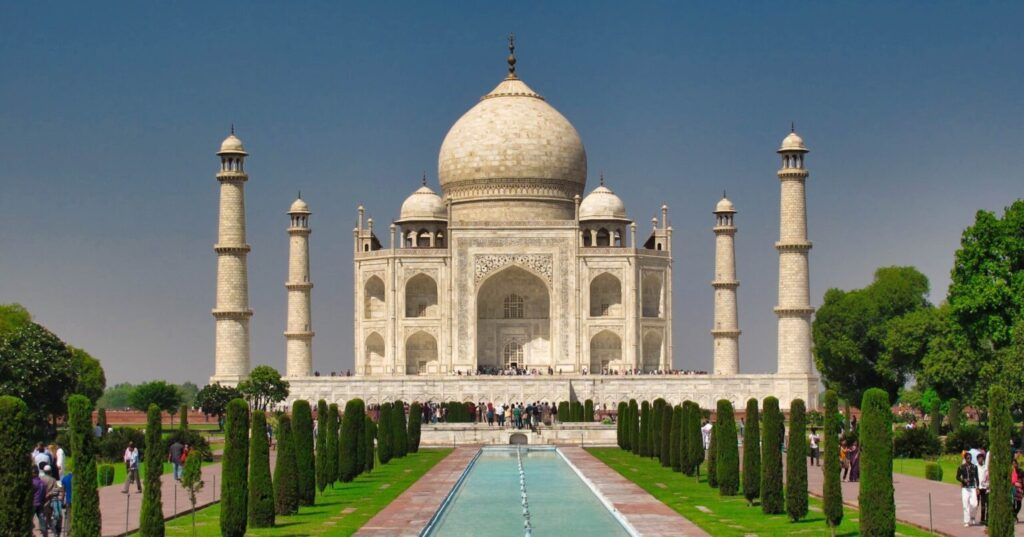
The Taj Mahal’s interiors
The Taj Mahal interiors should be discovered. The fascinating thing is that there are very few images of how it is decorated since photography is forbidden. The main room is in the middle of the building and houses the cenotaphs of the emperor and his wife. Octagonal rooms surround this hall, and they are placed in the corners. A wonderful marble dome covers the entire room. In general, the interiors of the Taj Mahal are all to be discovered and will leave you breathless.
The garden of the Taj Mahal
You will not easily forget the spectacle that you get in front of the Taj Mahal’s garden. A water channel, surrounded by flower beds and tree-lined avenues, which from afar reflect the entire façade of the Taj Mahal, creating a truly unique mirror image! The garden spreads out symmetrically, thanks to the crossing of two canals, which divide it into four identical squares, which in turn are geometrically divided into four by the raised paths paved with stone. The symbolism of the number four is fundamental because it recalls the rivers of Islamic paradise.
The black Taj Mahal
The Taj Mahal is on every list of places to visit in India, but what if we told you that Emperor Shah wanted to build another one? Although never completed, his project consisted in having a mirror image of the Taj Mahal carved in black marble. This would then become his burial place. However, fate decided for him. After being deposed from the throne by one of his beloved wife’s children, the project was abandoned. A real shame, yet there are still so many places to visit in India!
Agra
We have already mentioned the Taj Mahal, which dominates the scene and makes the city of Agra one of the places to visit in India. But this city has so much more to offer its visitors. Located just a few kilometres from New Delhi, Agra is a very rich and lively city. After a must-see visit to the Taj Mahal, enjoy a stroll through the streets and discover Agra’s nightlife. In fact, many clubs and discos are concentrated in the centre, where karaoke or casino evenings are organised. In the city, there are other mausoleums of extraordinary beauty and also numerous museums. For example, at the Taj Museum you can admire the typical Indian tradition of ceramics and jewels and at the Spiritual Museum you can dedicate yourself to the history of the Islamic and Hindu religions.
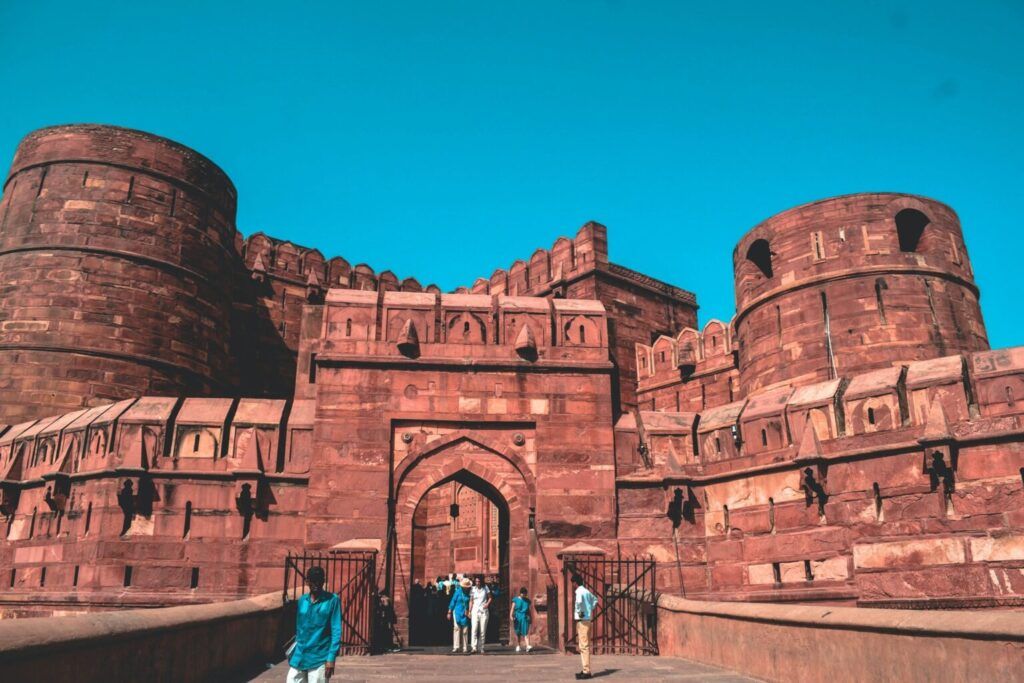
The Fort of Agra
The Fort of Agra is almost as impressive as the Taj Mahal, but this fortress replaces poetry and romance with the charm of historic military structures. Another UNESCO heritage site, it is a semi-circular construction, of 380,000 square metres, made unique by its redness. This is due to the red sandstone used in its construction, which provides an extraordinary appearance. Don’t miss the two access doors, the Delhi Gate and the Lahore Gate (also known as Amar Singh Gate). The Delhi Gate is considered the most attractive and the most important one at the fort. Constructed in 1568, it was the emperor’s formal entrance.
Andaman and Nicobar Islands
Two archipelagos packed with charm and altogether formed by well over 550 islands and islets. Ladies and gentlemen, these are the Andaman and Nicobar Islands. These wild islands located in the Bay of Bengal are actually the peaks of a submerged mountain range. It stretches from Myanmar to Sumatra, Indonesia.
Although the islands are countless, not all of them are accessible by foreign tourists and some are even off-limits to Indian citizens. In fact, in the Nicobar Islands there are still indigenous communities. In particular, two tribes, the Jarawa and the Sentinels, must be protected from contact with the civilised world, to preserve their traditions and their ancestral lifestyle.
However, tourists can only reach a dozen of the Andaman Islands. Usually, you start from the capital, Port Blair, to do excursions. This city is very lively and home to the Gandhi Marine Park and the old prison, Kala Pani, which is now a museum. Among the various islands and beaches you can reach, you could give yourself a day in Neil. It is a very small island and a real tropical paradise with beautiful vegetation and an unforgettable coral reef. Or enjoy a sunny day on Kalipur beach, an ideal place for nesting turtles. Think that this is the only beach in the world where up to four different species of turtles live.
But when should you go to the Andaman Islands? Throughout the year, temperatures range from 25° to 33° and the same applies to sea temperature. The best time to avoid the abundant summer rains is between January and June, while August is not recommended. In general, all you need here is a costume and a hat to protect yourself from the scorching sun to enjoy the spectacle of nature.
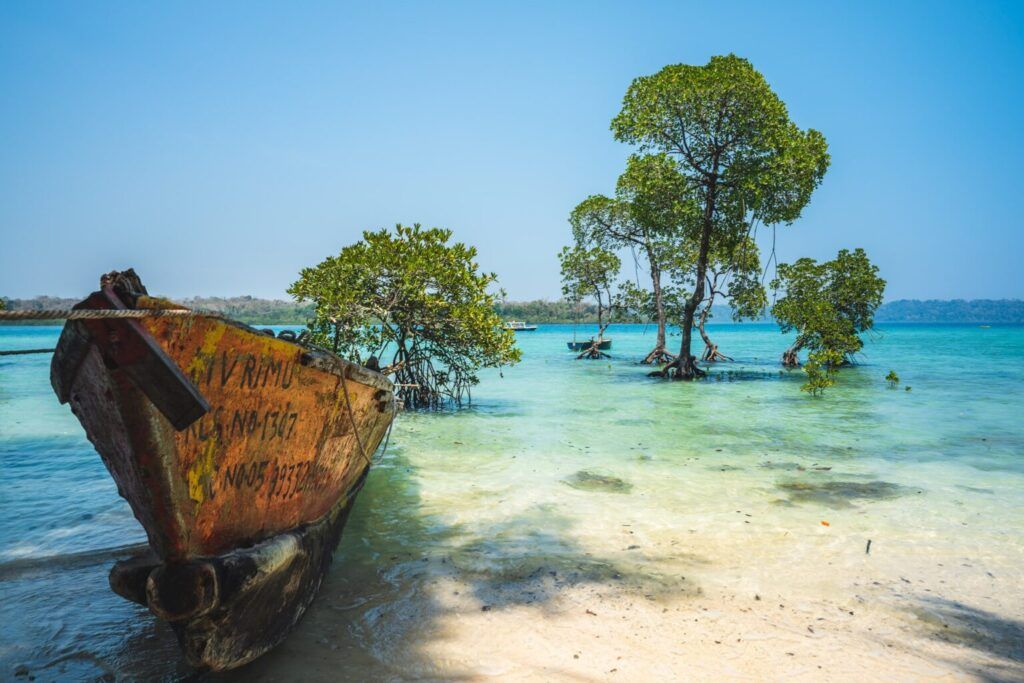
Varanasi and the Ganges River
Among the many places to visit in India, surely the city of Varanasi and the river Ganges that crosses it are those that in everyone’s imagination immediately make you think of India.
Here’s some help for your summer crossword puzzles: Varanasi’s other name is Benares or Banaras. The name derives from the two tributaries of the Ganges that determine the boundaries of the city, namely the Varuna and the Asi.
This city is one of the oldest in the world, as it has been inhabited for about 3,500 years, and one of the most important sacred places in India. At least once in their lives, all the faithful come here to immerse themselves in the sacred waters of the Ganges from at least four different points. The best time to be a spectator of this ritual is at dawn when tourists have not yet filled the streets. In Varanasi there are also cremations of the bodies along the ghats. That is the stairs and the squares that overlook the Sacred River Ganges. This ritual allows the faithful deceased to escape the cycle of reincarnation and access the paradise of Shiva directly. That is why millions of Hindus, especially the elderly, have chosen Varanasi as their place to die over the centuries.
After strolling along the river and its 88 ghats, you can visit numerous temples, such as the Aces Ghat, known as the temple of the monkeys. It is a building painted in deep red, dedicated to the goddess Durga. Hundreds of worshippers come here every day to leave offerings in exchange for the goddess’s blessing, in the form of candy and flower necklaces.
Have you ever thought about taking a cruise along the Ganges? On the river, numerous boats are jumping at the opportunity to give you a distinct and unique perspective of the city. Slow and mystical navigation through Hindu traditions: seeing is believing!
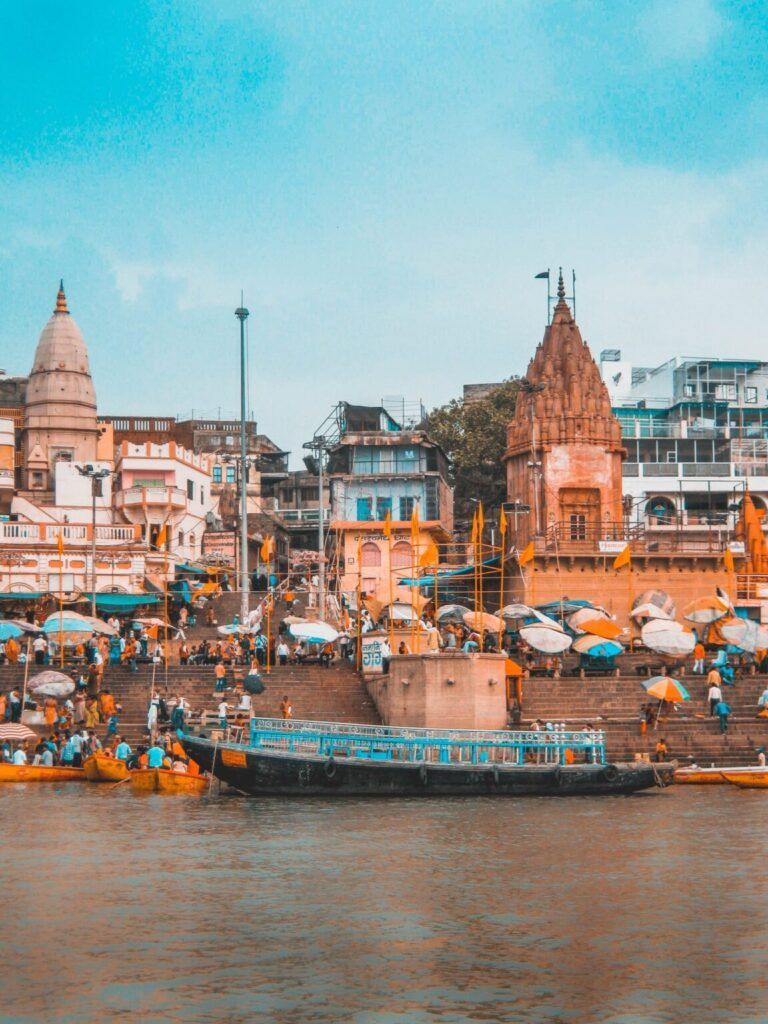
Ellora and Ajanta
If you’re wondering where the best places to visit in India are, hold on tight because the Ellora and Ajanta caves will blow your mind! We are in the state of Maharashtra, in the heart of India. These caves are actually monasteries dug into the rock.
A UNESCO World Heritage Site since 1983, the caves of Ajanta are located in a horseshoe-shaped escarpment, which follows the curve of the river below. The caves of Ajanta can be dated to the second century BC. They contain paintings and sculptures considered the cornerstones of religious art. Covered by vegetation, the entrances of the caves will look like small windows on the rock from a distance. In reality, they develop a series of paths, colonnades, temples and rooms decorated with ancient bas-reliefs inside. I mean, you’re gonna feel like you’re going into a hidden city.
A hundred kilometres away is another World Heritage Site: the Caves of Ellora. It is a complex of 34 caves used as temples, which have always been a pilgrimage destination for three great religions, namely Buddhism, Brahmanism and Jainism, as the caves are divided for each type of creed. The Buddhist caves were thought to be the oldest. However, it has been proven that the Hindu caves were built before the others, around the fifth century A.D. It’s time to let yourself be carried away by the charm of religious art and discover every small temple.
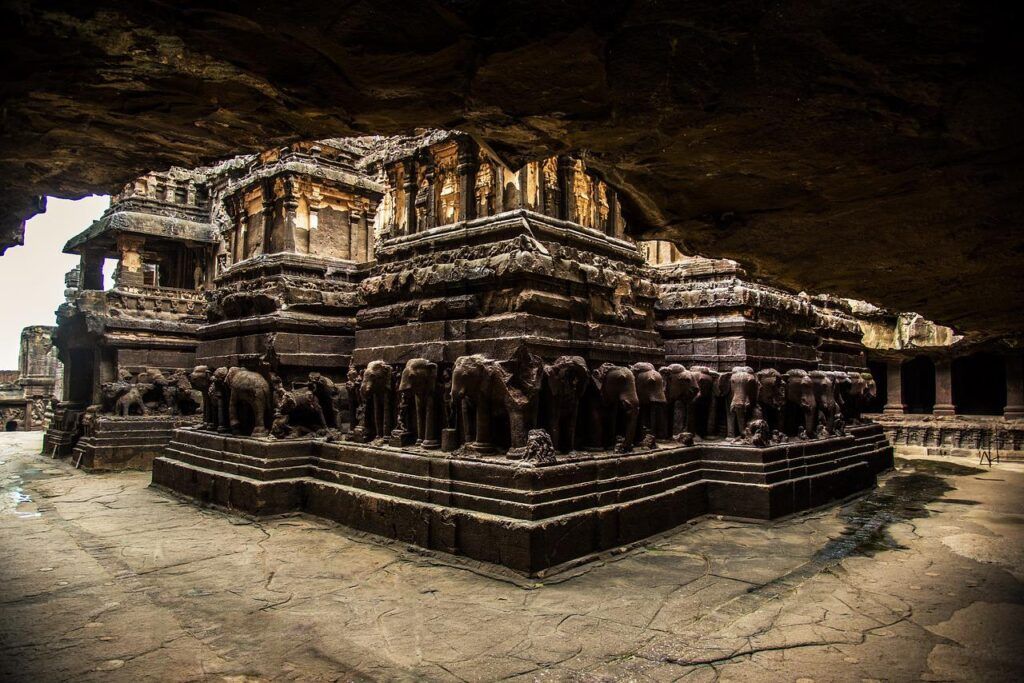
The Fort of Mehrangarh in Jodhpur
Situated on a hill, 400 metres above the city of Jodhpur stands the Mehrangarh, called Majestic Fort. It is a fortress in the state of Rajasthan. This place was home to the Indian Rathore clan. It was also home to the rulers around 1458, the year the fort was erected. Today, it has become a museum that is one of the places to visit in India, as well as a reference point for Indian culture.
The building is accessed through seven portals and here you start to climb higher and higher. This walk through the sandstone walls full of carved inlays is just the beginning of the visit. Each room of the palace hides incredible treasures of Indian tradition. Such as the sumptuous palanquins that were used to ride elephants or objects dedicated to opium smoke. Between one room and another, you will discover beautiful courtyards. Here you can admire the facades of the palace decorated by the Jali, the perforated watermark windows, where women hid to attend external events. The Maharaja’s bedroom is a masterpiece of reflections given by the hundreds of mirrors that decorate the ceiling, walls and floor. A single light was enough to illuminate the environment.
From the fort, you will have an all-round view of the blue city of Jodhpur. Its nickname obviously derives from the blue paint that colors most of the buildings, once used to distinguish the homes of members of the highest caste of society. The heart of Jodhpur is the old city, which is surrounded by 10 kilometres of walls, interrupted by seven portals; inside you will find wonderful palaces and the iconic bazaar.
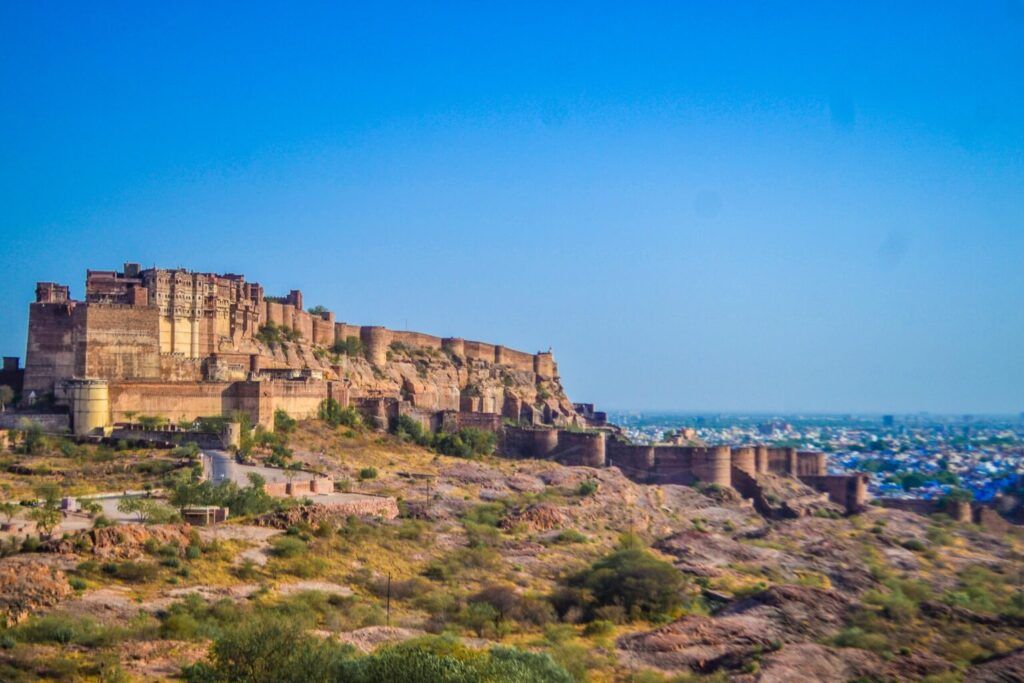
Pink city: Jaipur
The state of Rajasthan offers another pearl to visit, Jaipur. It is called a pink city because of the colour of the sandstone that decorates many buildings. The city was founded in 1728 by Maharaja Jai Singh II and differs from the others for its reticular plan, marked by wide tree-lined avenues, somewhat modern for its time.
Among the things to see in this city, there is the Jaipur Palace, Maharaja’s historic residence. A huge structure with numerous courtyards, two museums and an armoury. The Courtyard of the Peacock, the most famous among the many in the palace, consists of four doors that represent the four seasons. The Hava Mahal is a five-storey complex with a beautiful façade, which has almost a thousand niches and windows, all worked with lace.
Jaipur is home to one of the world’s largest astronomical observatories, the Jantar Mantar. Included among the UNESCO World Heritage sites, it was built in 1700 and houses all the tools used at the time to make forecasts on the harvest and horoscopes, as well as to measure time.
Jaipur, in addition to its beautiful historic buildings, with more than 3 million inhabitants, is chaotic and noisy and, like all the great cities of India, full of contradictions, but still fascinating.
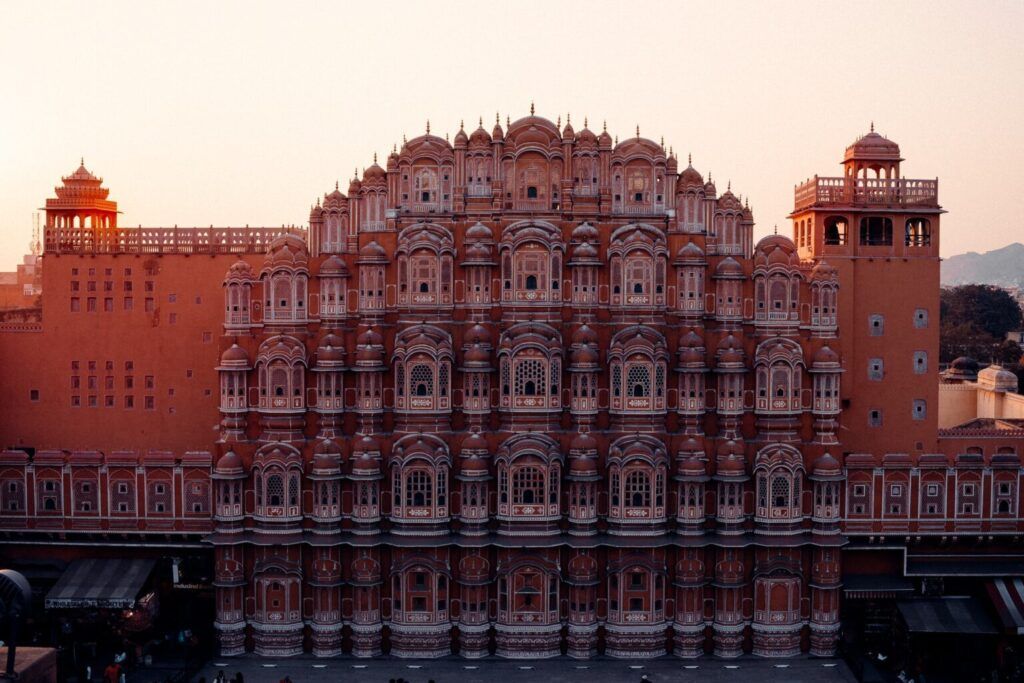
Mumbai
Mumbai holds the world record for being the city with the highest population density. More than 13 million inhabitants in a territory of 31,000 square kilometres. The capital of the state Maharashtra is located on the west coast of the country and is one of the best places to visit in India.
This metropolis develops around a vast port, the hub of Indian navigation and commerce. It occupies two islands off the coast, the homonymous Mumbai to the south and the island of Salsette to the north, connected by bridges. Over the centuries, Mumbai has become the crossroads of cultures. This is thanks to the numerous dominations, from the Hindu empire, through the Muslims and finally the Portuguese and the English. What should you visit in Mumbai?
One of the most iconic stops is the Taj Mahal Palace. It is a hotel built in 1903, overlooking the Arabian Sea. Luxury is the master here, with elegant furnishings inspired by Indian tradition. Inside, you will find dozens of restaurants and plenty of shops. The walk from here continues through the streets of Colaba, an area on the seafront that, in addition to being very touristy and full of shops, is the city’s financial hub.
The English left many traces of their culture in Mumbai. Just think of the massive Portal of India, a 26-metre tall base, erected on the occasion of the arrival of King George V. This structure stands out among the various buildings of the city and is one of the symbols of Mumbai. It overlooks the sea and is composed of a large yellow basalt arch surrounded by four turrets.
Also worth mentioning are the Elephanta Caves, on the homonymous island not far from the port of Mumbai, and the beautiful Haji Ali Mosque. The latter, coloured in white thanks to its marble, seems to hover on the waters of the Arabian Sea.

Kerala
Moving into the deep south of India we find Kerala. It is a narrow and elongated state overlooking the Indian Ocean, ideal for a holiday in nature and very relaxing. Here you will feel like you are in another country. Life in Kerala has nothing to do with the chaos of Indian metropolises.
From the north to the south of the state you will come across fine sand and numerous palm trees that will shade you on the beach. The Indian Ocean’s water is constantly warm and you can take a dip in a picture-postcard setting. Alternatively, heading inland you can navigate backwaters, or the inland waters of Kerala. For 900 kilometres a real maze of canals develops, along which you can see the inhabitants fishing and a succession of mosques, houses, churches and temples.
After a nice Ayurvedic massage you are ready for another excursion to discover the tea plantations: one of the things to see in India. In fact, you’ll find many tours in the mountains of Ghati to visit these crops that look like the drawing of a painter. You can see the locals collecting and drying tea leaves, sipping a cup and visiting the factories.
The best time to visit Kerala is between December and February when there is little rainfall. In general, you can decide when to go, because the climate is mild and the sea is always warm!
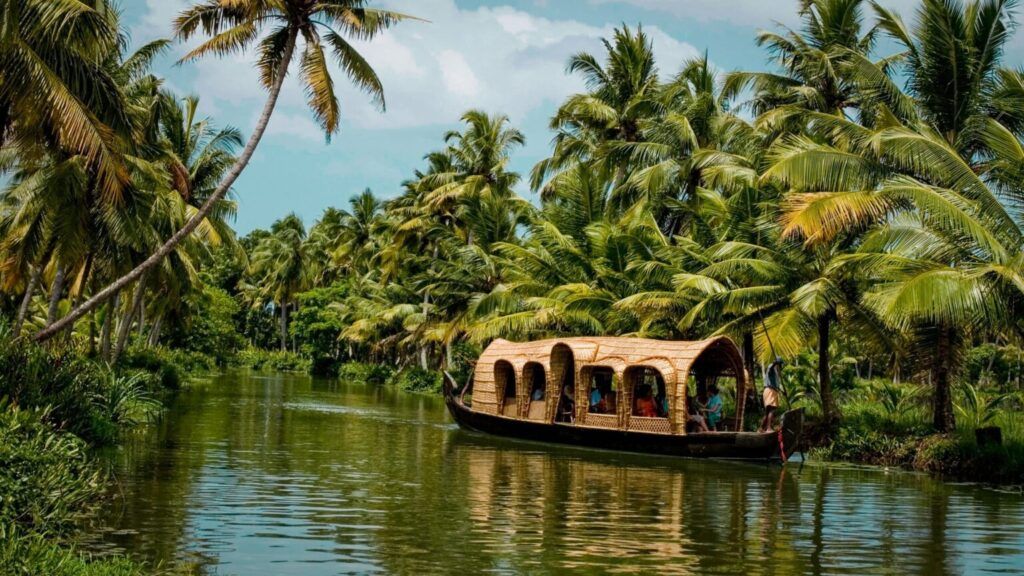
New Delhi
No, you can’t go to India without visiting its capital, New Delhi! This city is the seat of government of the most populous liberal democracy in the world. That would be enough. New Delhi’s history and culture deserve almost a separate essay. There is undoubtedly a multitude of things to see in this city. We must first distinguish between the old city and the new city.
Visit the Akshardham Temple, the largest of the Hindus, truly majestic and imposing. Although it is a very recent temple, it still manages to leave you breathless thanks to its immense gardens and finely decorated interiors. We forbid taking videos or photos and cell phones. It is an experience of immersion in silence and religion without distractions: one of the most beautiful places to visit in India!
Move on to visit the Tomb of Emperor Humayun. This place was created at the behest of his wife. UNESCO World Heritage Sites included this place for its majesty. Over the decades, it has become the mausoleum of the imperial family, containing the tombs of more than 150 royal members.
Don’t miss the Lodhi Gardens, an immense green area full of palm trees, flowers and bridges that connect the tombs of the rulers of the Sayyid and Lodi dynasties. Here too the inhabitants of New Delhi themselves love to relax and breathe clean air. The area is far from the hustle and bustle. It is perfect for a romantic getaway or just to keep fit by doing yoga and jogging.
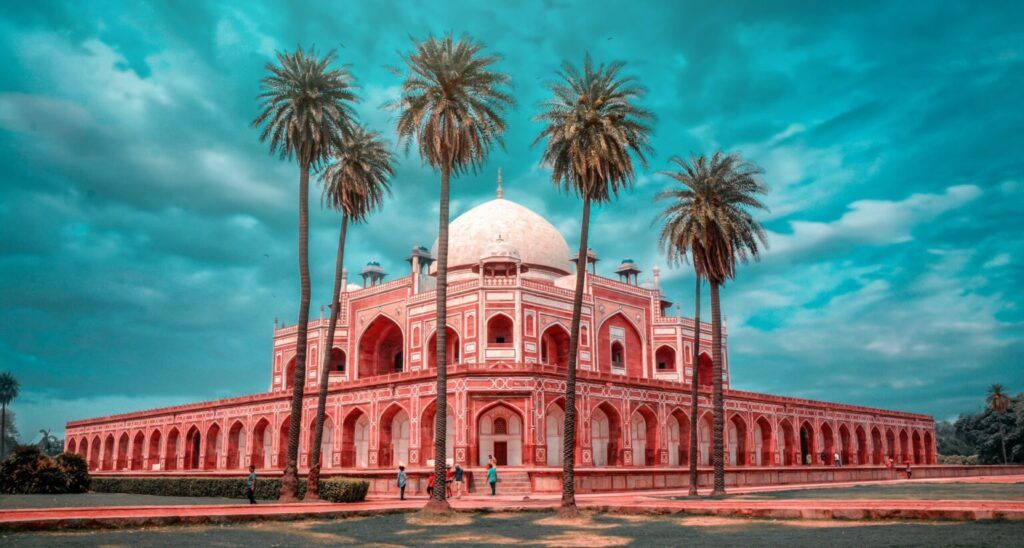
The Thar Desert
You cannot skip the famous Thar desert among the places to visit in India. Known as the Great Indian Desert, originally one of the routes of the Silk Road. This area extends over four states. Unique landscapes among dunes, stones and very little mostly bushy vegetation characterise this desert. Despite the harsh territory, the fauna is rich. Indian gazelles, antelopes and wild donkeys inhabit this area, together with numerous migratory birds and rare endemic reptiles.
The extraordinary nature of the Thar desert, scorched by the sun, is shown in its oases, the only inhabited areas. For example, there is the Jaisalmer oasis, where camels are bred and gypsum and salt are extracted. Even today, you can visit the caravans of nomads passing through these isolated inhabited centres. In the desert, you can take numerous excursions by jeep and even walks with camels. What matters is to always be equipped for the temperature excursion in the morning and at night. The temperatures fluctuate massively between 50 degrees during the day in the summer and -5 degrees at night during the winter months!
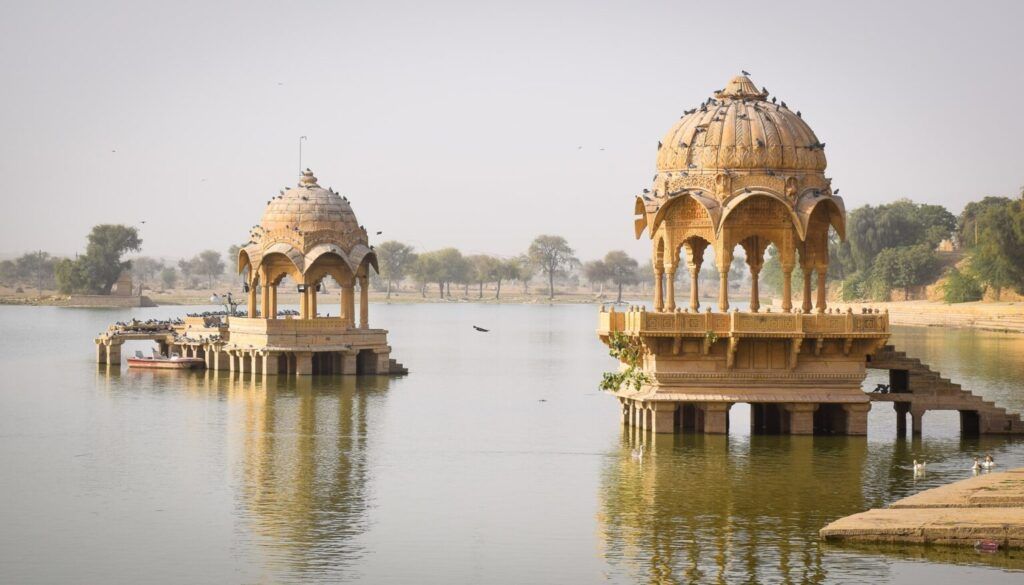
Organised group trips to India
In this article, we have ranged from the adventure of deserts and wild islands to the millennial history of cities, passing through a very deep spirituality. Are you curious? We too have planned a wonderful itinerary in India!
Whether you want to visit the cities or dedicate yourself to natural wonders, we are sure that you will find the right trip with us 😉

